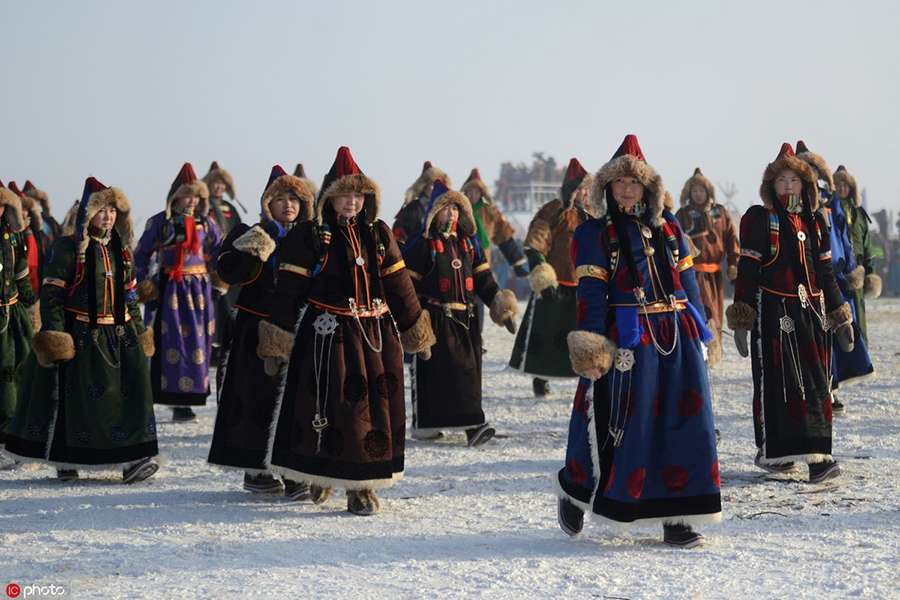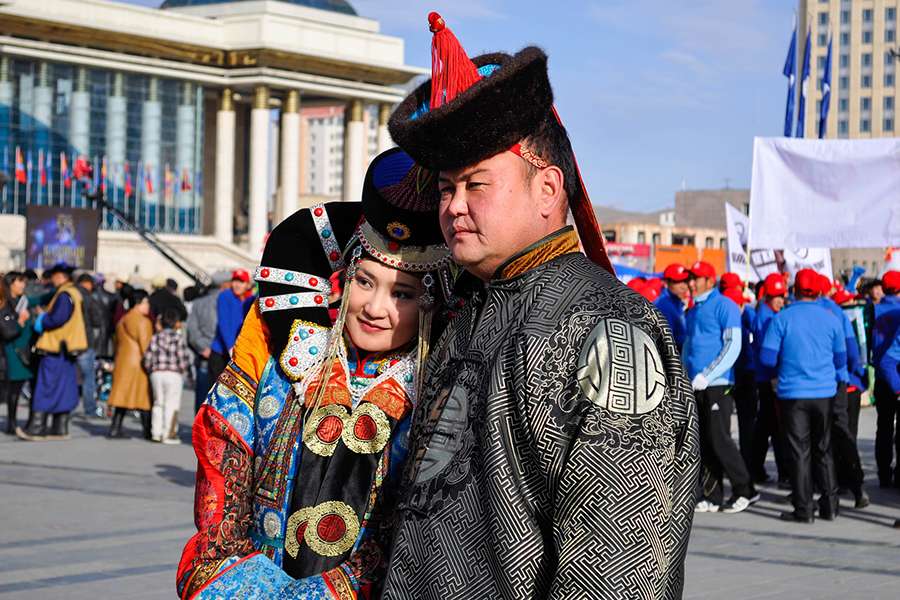Mongolia is a country with a rich cultural heritage and a unique way of life. One of the most significant elements of Mongolian culture is its traditional dress, if you are planning to visit Mongolia, experiencing the traditional dress is a must-do activity to immerse yourself in the local culture.
What are the characteristics of Mongolian costumes in the past?
Traditional Mongolian costumes are characterized by their vibrant colors, intricate embroidery, and unique designs. They are often made from silk, wool, or cotton and feature a variety of traditional patterns and motifs. Mongolian costumes for women typically consist of a long袍 (袍), a jacket (坎肩), and a skirt (裙子). The袍 is a loose-fitting garment that is often belted at the waist and features a high collar. The坎肩 is a short, sleeveless jacket that is worn over the袍. The裙子 is a long, pleated skirt that is often made from a different fabric than the袍 and坎肩. Mongolian costumes for men typically consist of a long袍, a jacket (坎肩), and pants (裤子). The袍 is a loose-fitting garment that is often belted at the waist and features a high collar. The坎肩 is a short, sleeveless jacket that is worn over the袍. The裤子 are loose-fitting pants that are often made from a different fabric than the袍 and坎肩.

What materials were traditionally used to make Mongolian costumes?
Traditionally, Mongolian costumes were made using a variety of materials that were suitable for the harsh climate and nomadic lifestyle of the Mongolian people. Here are some of the materials commonly used:
1. Wool: Sheep wool was one of the most widely used materials for making Mongolian costumes. It provided warmth and protection against the cold weather.
2. Felt: Felt, made from sheep wool, was another important material. It was used to make various items like hats, boots, and outer garments called “deels.”
3. Silk: Silk was a luxury material used for making decorative elements of Mongolian costumes, such as embroidery, trims, and linings.
4. Leather: Leather was used to make footwear, belts, and other accessories. It provided durability and protection against the rugged terrain.
5. Fur: Fur from animals like sheep, goats, and foxes was used to line garments and provide additional warmth.
6. Cotton: Although not as common as the previous materials, cotton was sometimes used for making undergarments and lightweight clothing.
These materials were chosen for their practicality, durability, and suitability for the Mongolian climate and nomadic lifestyle.
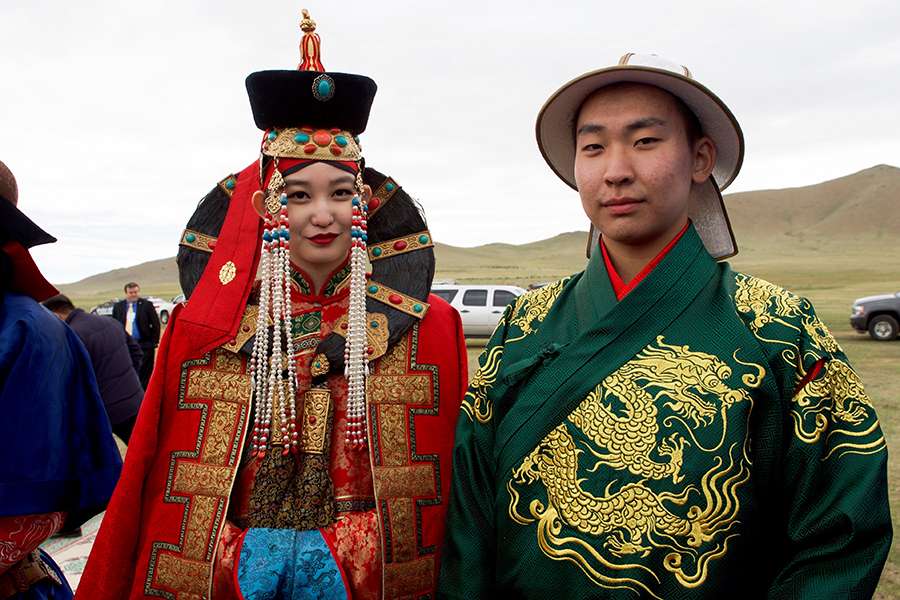
Top 5 Traditional Dresses in Mongolia
Mongolian Hats
The traditional headwear of Mongolia is a vibrant and unique aspect of their national dress. These headdresses served different purposes and varied in shape depending on the age, gender, social status, tribe or nationality of the wearer, and the occasion. The hat holds great significance for Mongolians, particularly men, as it is considered the most respected clothing item. There were hats for both summer and winter, for men and women, and for everyday wear or special events. The colors, fashion, and decorations of these hats were diverse and fascinating. It is customary for Mongolian men to place their hat and belt on higher surfaces and never on the ground or facing upwards. Historically, the hat denoted the social status of the owner and there are around 400 different styles, shapes, and types of hats that are categorized by season, ethnicity, and gender. The commonly used form is conical (blue or red) with 32 stitches, symbolizing the unity of the 32 Mongol tribes. In ancient times, this hat symbolized the strength of the Mongol empire, capable of scaring enemies.
During the Middle Ages, both women and men adorned themselves with summer hats crafted from plush wet velvet. These hats featured upturned brims and brocaded pointed tops, complete with a fanciful knot on the crown. In ancient times, these hats symbolized power and had the ability to instill fear in enemies. Meanwhile, during the summer season, Mongols opted for either the hat described above or a flat-topped “Toortsog” hat, which consisted of six gores. The Toortsog hat had an upper and lower part, with the upper part being sewn together from six separate pieces.
It was forbidden for married women to wear a particular type of hat, which was reserved only for young girls and men. Women’s holiday headwear was known for its originality and luxurious adornments. It typically included a silk and velvet hat, along with a complete decorative set for the hair. The lower part of the hat was made from velvet, while the upper part was made from red silk. The hair holder was embellished with coral, pearl, and mother pearl, and adorned with a Shanaavch temporal decoration that featured little silver bells. Additionally, women often wore a headdress called the “Tolgoin boolt,” which was made of silver and studded with precious and semi-precious stones. Women’s hats were more fashionable than men’s, and the ribbons on them were often decorated with turquoise.

Deel Mongolian Costume
Mongolia is a country with a rich cultural heritage and a unique way of life. One of the most significant elements of Mongolian culture is its traditional dress, which is known as the “deel”. The deel is a long, loose-fitting garment that is worn by both men and women. It is made from thick, warm materials such as wool or silk to protect against the harsh Mongolian climate. Leather coats are commonly made from sheepskin (lamb), goat, wolf, fox, otter, marten, or weasel. The traditional Deel worn by the North Asian steppe people can be fashioned from cotton, silk, wool, or brocade. The deel features a high collar and wide sleeves, providing comfort and ease of movement. It is often adorned with intricate embroidery and colorful patterns, reflecting the rich cultural heritage of Mongolia. The deel is not only a practical piece of clothing but also a symbol of national identity and pride for the Mongolian people. In recent years, the deel has become increasingly popular among tourists, who are fascinated by its unique design and cultural significance.
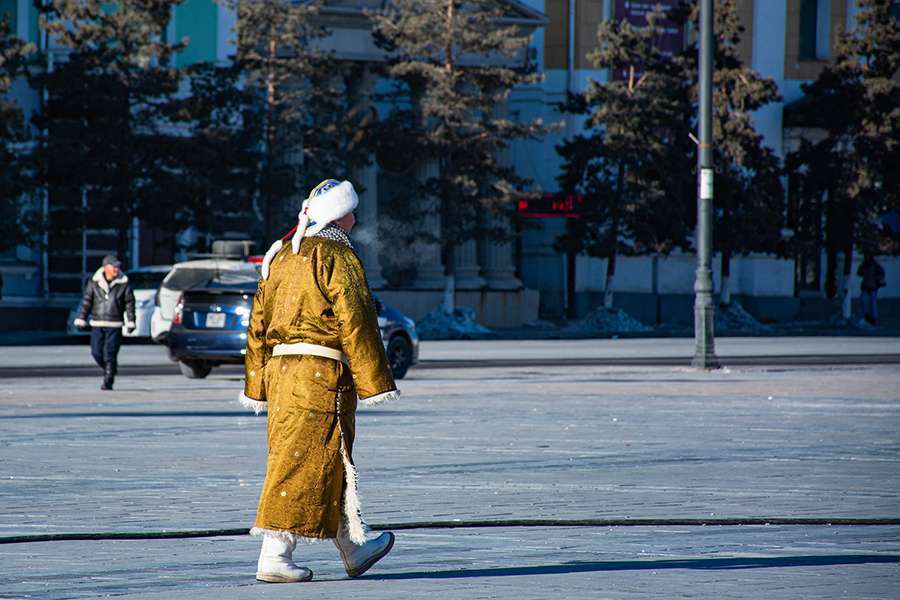
Mongolian Boots
Traditional Mongolian boots are made of leather and have a high heel. The heel is usually made of wood or metal. The boots are often decorated with embroidery or other types of embellishment.
The upturned toes of boots have sparked various explanations for this unique style. One theory suggests that if boots had upturned toes prior to 1578 when Buddhism was introduced to Mongolia, it could be an example of religion incorporating local customs and beliefs to promote their own faith. Another explanation is that the upturned tip serves to prevent a rider’s feet from slipping out of the stirrups. Additionally, the thickness and rigidity of boots make walking nearly impossible if they were flat.
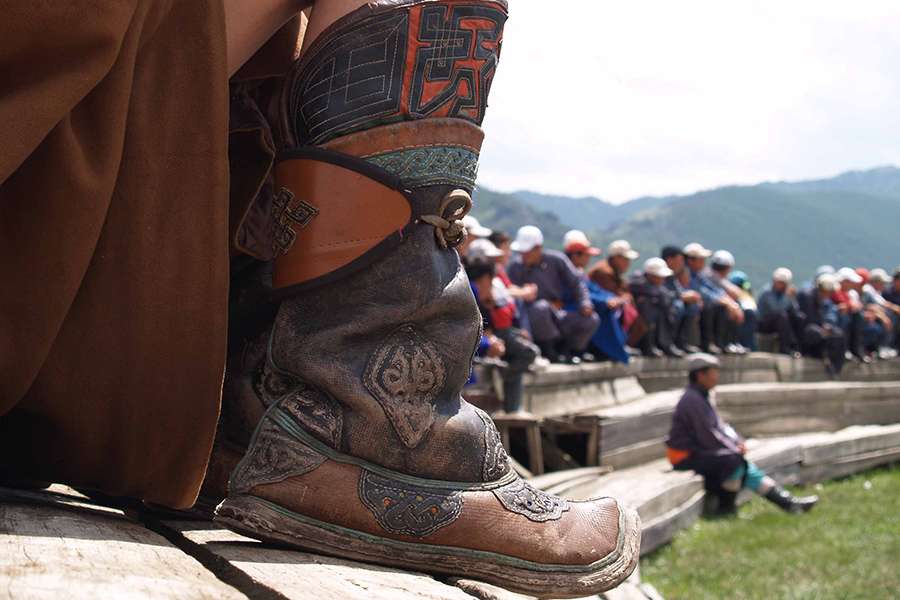
Tsagaan Idee Mongol Costumes
Tsagaan idee, also known as the “white outfit,” is a traditional Mongolian costume worn during special occasions and ceremonies. It consists of a white silk or cotton robe, often decorated with intricate embroidery and silver ornaments.
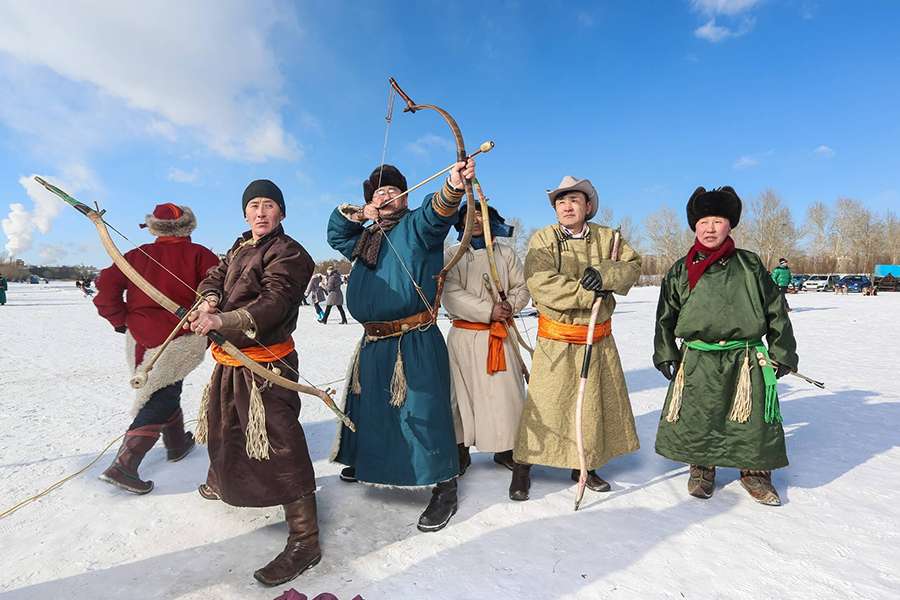
Buryat Traditional Costume
The Buryat people, who live in the Russian Republic of Buryatia and in Mongolia, have their own traditional costume.
Buryat traditional costumes are typically made using a variety of materials. It includes a deel made from silk or brocade, a belt with silver ornaments, and a headdress adorned with beads and feathers. The specific materials used may vary depending on the region and purpose of the costume.
For example, the outer layer of Buryat traditional costumes often consists of thick woolen fabrics, such as sheep’s wool or camel hair. These fabrics provide warmth and protection against the cold weather in the region.
Additionally, traditional Buryat costumes may feature decorative elements made from silk, satin, or brocade fabrics. These materials are often used for embroidery, appliqué work, or to create intricate patterns and designs on the costumes.
Other materials that can be found in Buryat traditional costumes include leather, fur, and various types of beads and ornaments. These materials are used to add texture and embellishments to the costumes, making them visually appealing and culturally significant.
